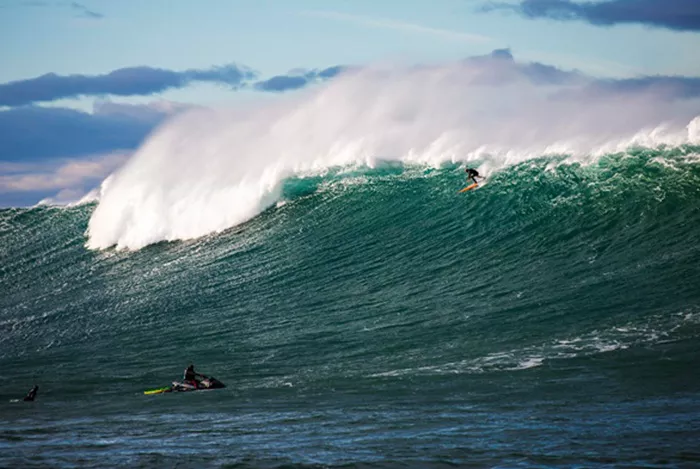Timo Järvinen, one of Europe’s most influential surf photographers, has passed away at the age of 60. Järvinen, known for his distinct “black lens” style and commitment to capturing the raw power of surfing, had been battling thyroid cancer since late 2024. His death marks the end of a prolific career that spanned decades and left an indelible mark on the surfing world.
Born in Helsinki, Finland, Järvinen’s journey into the world of surf photography began unexpectedly. After borrowing his father’s Nikon F camera, he captured his first images of snowboarders, which led to a double-page spread in a snowboarding magazine. His passion for photography quickly evolved as he relocated to Spain and then France, where he earned his place among the world’s top surf photographers. Despite coming from a land far removed from the surf culture, Järvinen’s work in iconic locations such as Pipeline, Teahupo’o, and La Gravière established him as a master of his craft.
Järvinen’s legacy is built not only on his stunning imagery but also on his unique approach to the sport. Unlike many photographers who prioritized commercial success, Järvinen was driven by a desire to capture surfing at its rawest, often avoiding the more traditional shots in favor of challenging angles and moments that showcased the essence of the sport. His focus on tube shots, in particular, became legendary—one of his most notable achievements being the first successful bomb drop shot at San Sebastián in 2002.
Despite his success, Järvinen was known for his humility and complex personality. He was both fiercely dedicated and remarkably introverted, often taking a step back from the spotlight to focus on his craft. Colleagues described him as a man of contradictions—warm and generous one moment, caustic and brutally honest the next. Timo’s honesty was one of his trademarks. A memorable encounter during a paddle out for Andy Irons saw Järvinen, in his signature no-nonsense manner, ask a fellow photographer if they had “done some fucking journalism” while on the water.
Järvinen’s relationship with surf culture was equally nuanced. He remained critical of trends in the photography world, especially the rise of GoPro-style action shots and the increasingly desaturated aesthetic common in social media imagery. A staunch believer in the power of still photography, he never fully embraced the shift toward video, despite being surrounded by peers who transitioned to filmmaking.
A lesser-known aspect of his life was his deep involvement with the surf community. Järvinen was always eager to help amateur photographers, often spending hours teaching others the intricacies of aperture settings and the technical side of surf photography. Yet, even those closest to him knew he struggled with personal demons. The loss of his daughter Meri, his own mental health battles, and the collapse of his career in the latter years weighed heavily on him. However, Järvinen sought to heal and reflect on his past, even exploring ayahuasca in an attempt to confront his inner turmoil.
In his later years, Järvinen moved back to Finland, where he continued to work in photography, including a notable project shooting for Audi with freeskier Candide Thovex. His final days were spent reconnecting with family and friends, living beyond the initial prognosis of his cancer diagnosis, which gave him more time to reflect on his legacy.
Those who knew Timo Järvinen remember a man who lived life with intensity and authenticity. As a photographer, he captured more than just surfing—he captured the soul of the sport, the grit, the beauty, and the rawness that defined it. While his absence leaves a void in the surf photography community, his work will continue to inspire future generations of photographers and surfers alike.
In a final tribute to his enduring spirit, friends and colleagues shared memories of Järvinen’s dark sense of humor, even in the face of adversity. As one friend recalled, during a conversation about his terminal diagnosis, Järvinen’s response was met with laughter, not from mockery, but from the sheer absurdity of life itself—a fitting send-off for a man who never took himself too seriously.
Timo Järvinen’s legacy will live on through his iconic images and the countless lives he touched throughout his career. He leaves behind a son, Kai, and a family that will forever cherish his contributions to both photography and surf culture.

